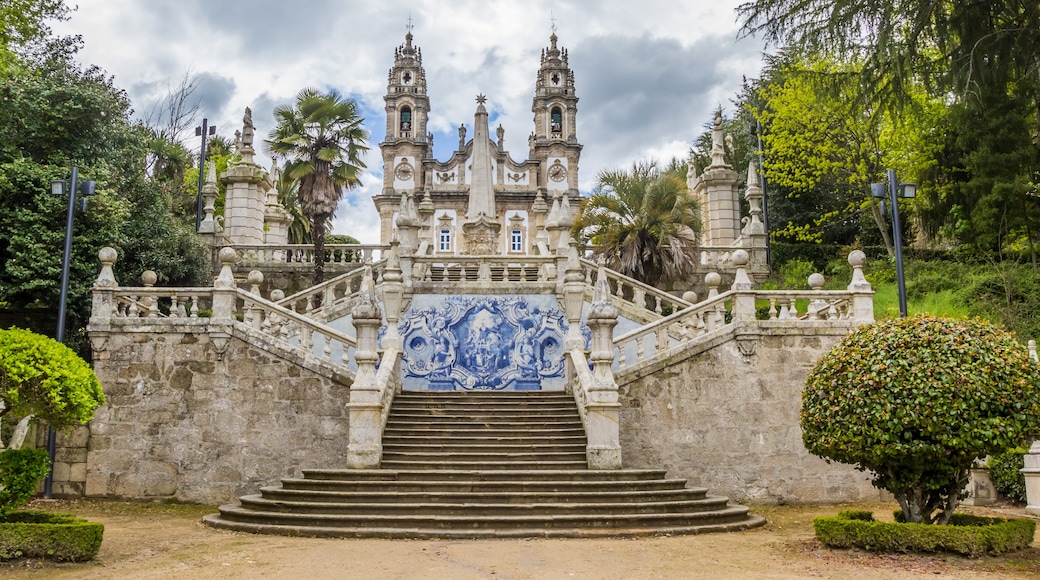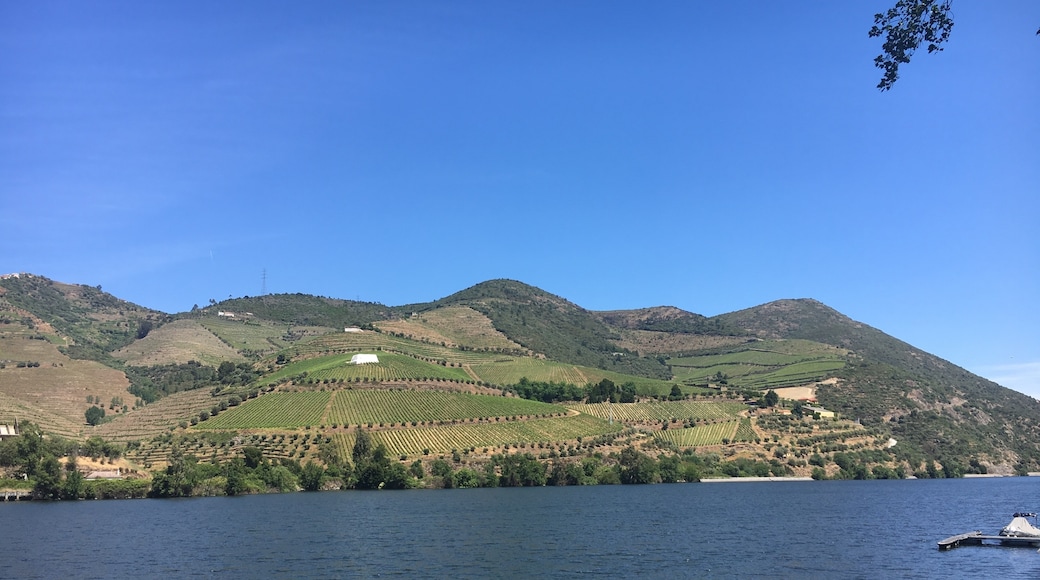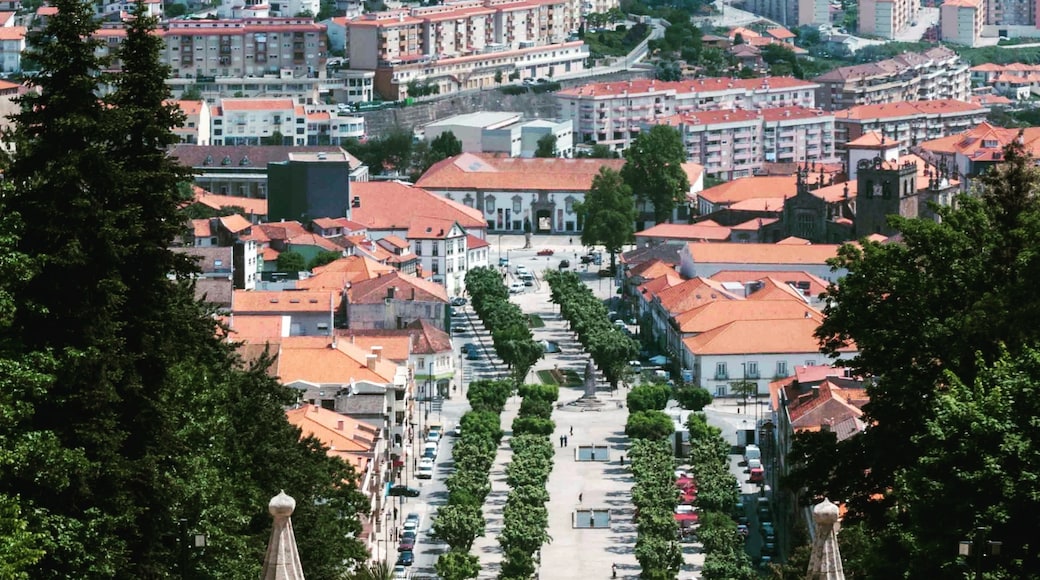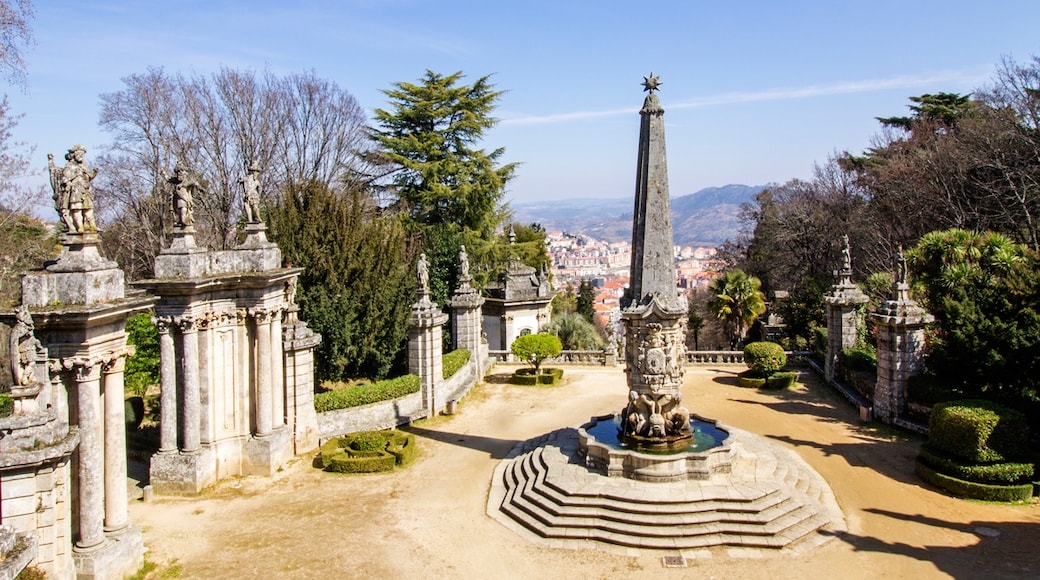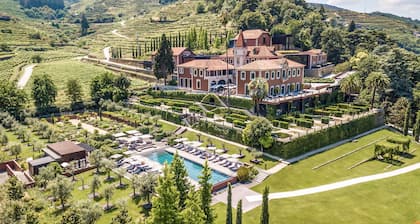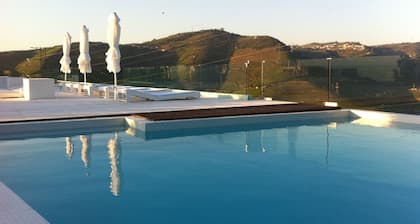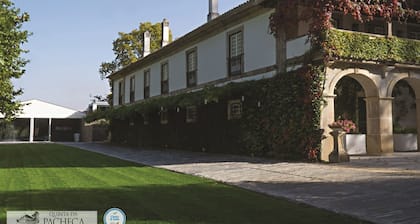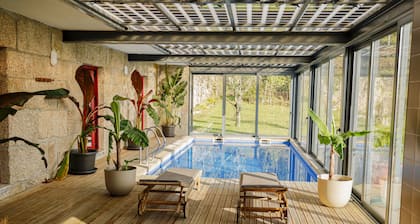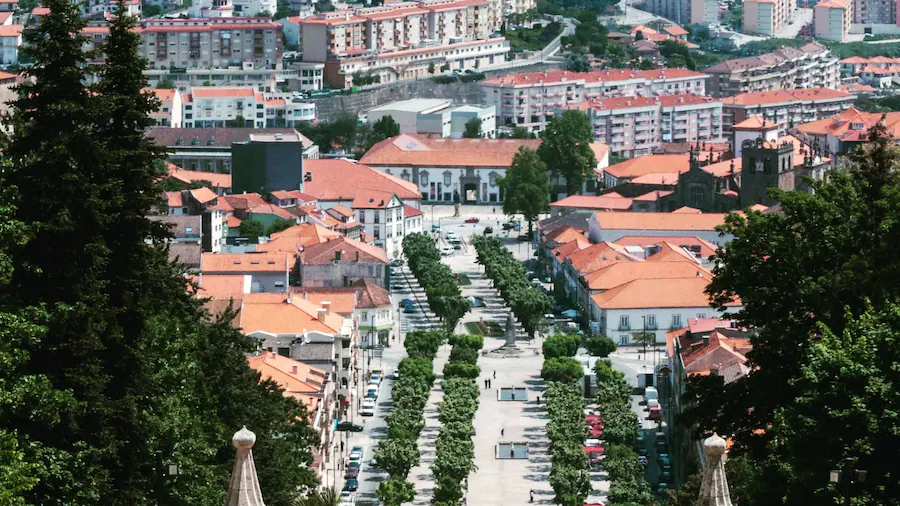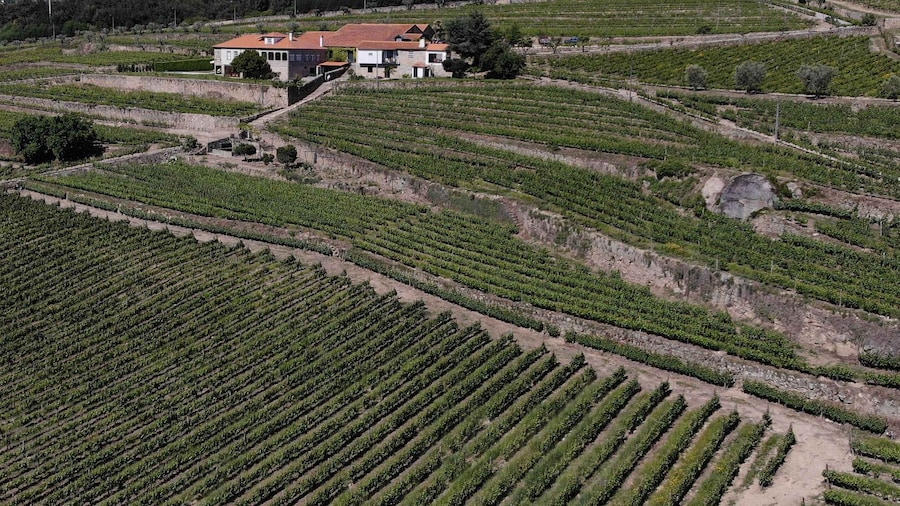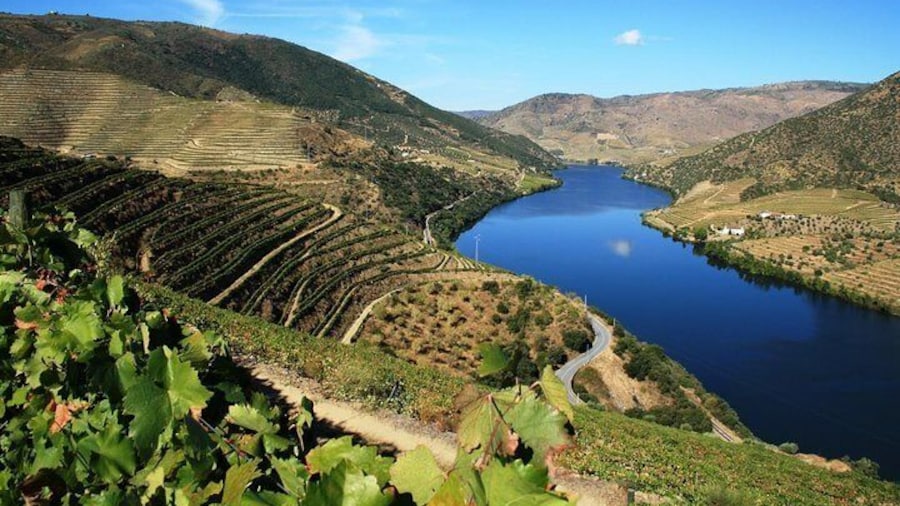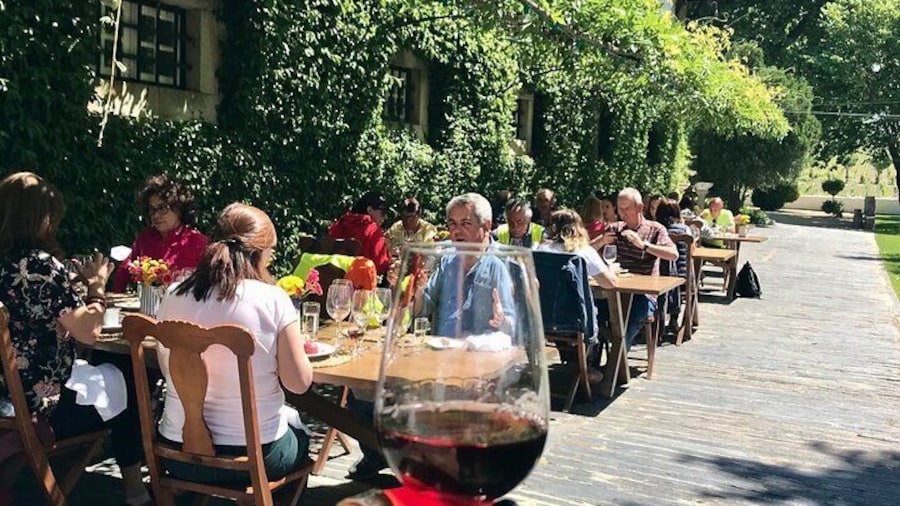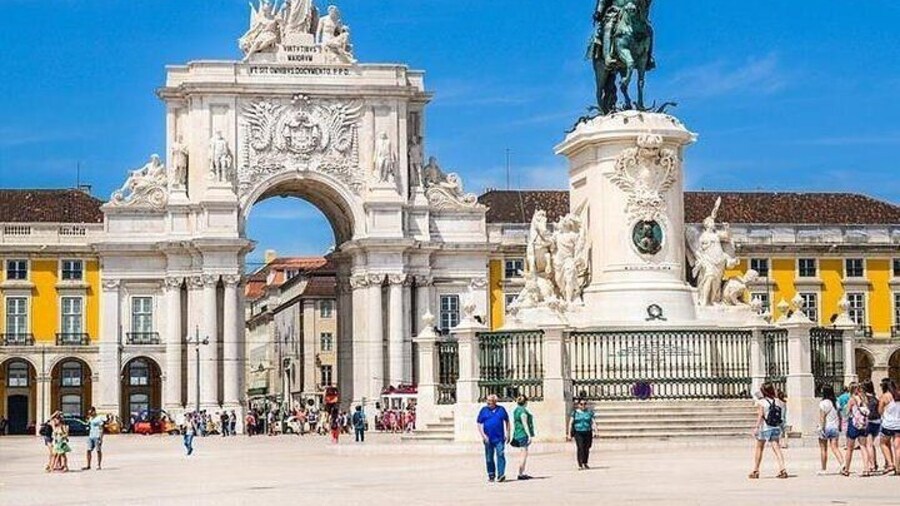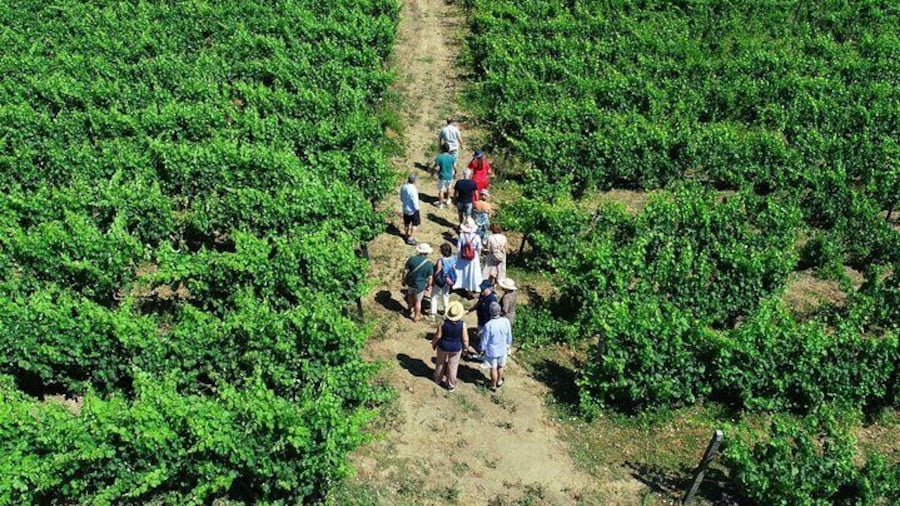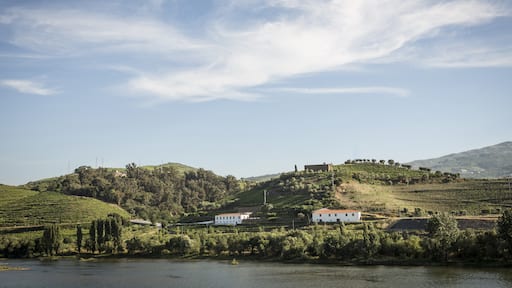The countryside town of Lamego has long been considered one of the most historically significant sites in all of Portugal. Home to a 12th-century castle and cathedral, Lamego prides itself on its role in the political and religious development of the country. It was here in 1139 that nobles decreed Afonso Henriques the first King of Portugal. Today, most travellers visit Lamego to tour the region’s historic churches and award-winning wineries.
For a sense of the city’s history, explore downtown Lamego. Climb the three-story keep of the Castelo, where you’ll learn about battles between Christians and Moors. Nearby, you’ll find the Sé de Lamego, the city’s Gothic cathedral. The church dates back to the reign of Alfonso Henriques and features stunning ceiling frescoes by the Italian artist Nicolau Nasoni. Across the street sits Museu de Lamego, the town’s museum. Housed in the former bishop’s palace, the museum offers a diverse range of exhibits, including Renaissance altars, Flemish tapestries and horse-drawn carriages. Admission is free on Sunday mornings.
Head west on the tree-lined Avenida Dr. Alfredo de Sousa to see the city’s most celebrated attraction, the Santuário de Nossa Senhora dos Remédios. This 18th-century baroque shrine stands atop one of the city’s tallest hills. To access the church, walk up the ornate 700-step staircase and pause at each of the landings to admire tile mosaics known as azulejos. The church is also accessible by car. Every September thousands of pilgrims trek to the shrine and the city holds a multiday festival, which includes concerts and theatrical performances.
Lamego is also well-known for its wines. Tour the cellars at Caves da Raposeira and taste their selection of sparkling wines. North of the city you can learn about winemaking at the vineyards Quinta da Pacheca and Quinta do Vallado.
Lamego is 70 miles (107 kilometres) east of Porto, from which it can be reached by bus or train. It’s best to rent a car if you’re looking to explore the region’s vineyards.
